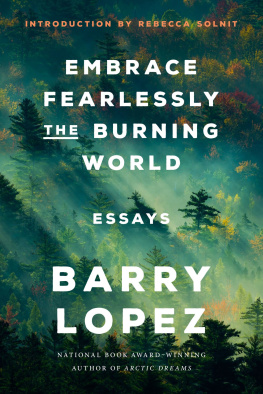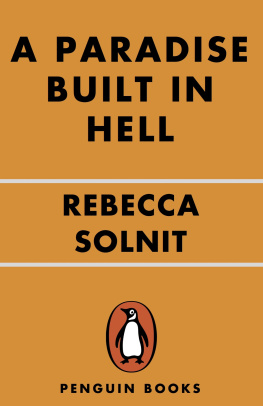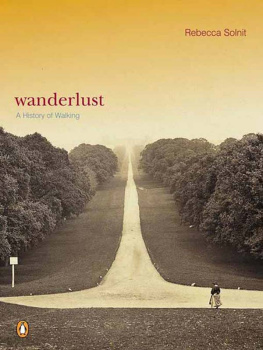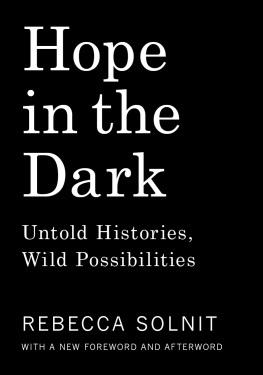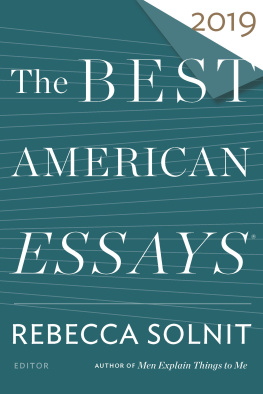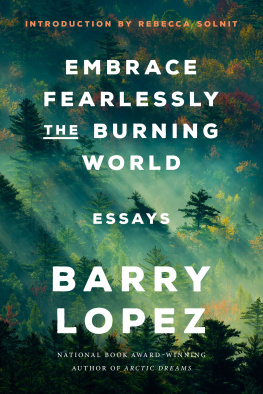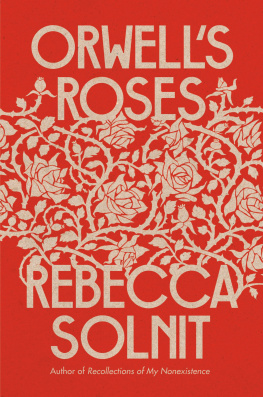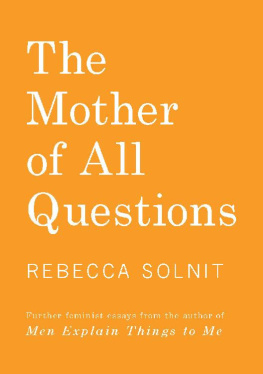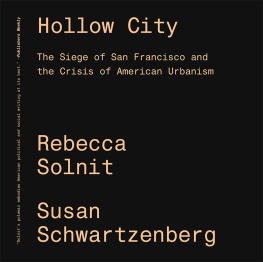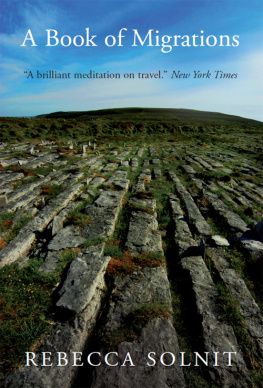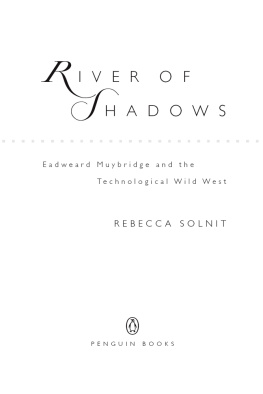Rebecca Solnit - Embrace Fearlessly the Burning World: Essays
Here you can read online Rebecca Solnit - Embrace Fearlessly the Burning World: Essays full text of the book (entire story) in english for free. Download pdf and epub, get meaning, cover and reviews about this ebook. year: 2022, publisher: Random House, genre: Romance novel. Description of the work, (preface) as well as reviews are available. Best literature library LitArk.com created for fans of good reading and offers a wide selection of genres:
Romance novel
Science fiction
Adventure
Detective
Science
History
Home and family
Prose
Art
Politics
Computer
Non-fiction
Religion
Business
Children
Humor
Choose a favorite category and find really read worthwhile books. Enjoy immersion in the world of imagination, feel the emotions of the characters or learn something new for yourself, make an fascinating discovery.
- Book:Embrace Fearlessly the Burning World: Essays
- Author:
- Publisher:Random House
- Genre:
- Year:2022
- Rating:3 / 5
- Favourites:Add to favourites
- Your mark:
- 60
- 1
- 2
- 3
- 4
- 5
Embrace Fearlessly the Burning World: Essays: summary, description and annotation
We offer to read an annotation, description, summary or preface (depends on what the author of the book "Embrace Fearlessly the Burning World: Essays" wrote himself). If you haven't found the necessary information about the book — write in the comments, we will try to find it.
Embrace Fearlessly the Burning World: Essays — read online for free the complete book (whole text) full work
Below is the text of the book, divided by pages. System saving the place of the last page read, allows you to conveniently read the book "Embrace Fearlessly the Burning World: Essays" online for free, without having to search again every time where you left off. Put a bookmark, and you can go to the page where you finished reading at any time.
Font size:
Interval:
Bookmark:
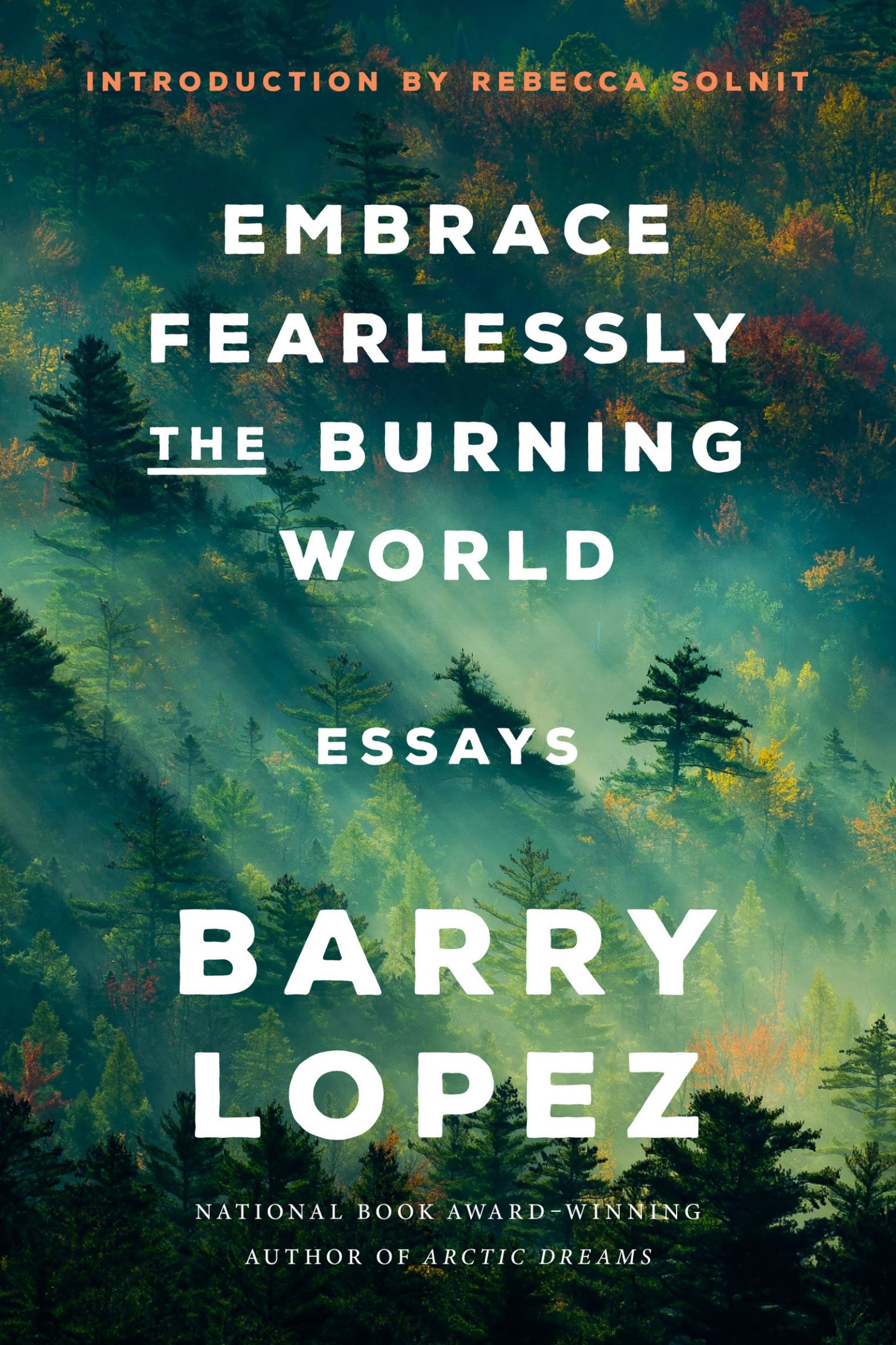
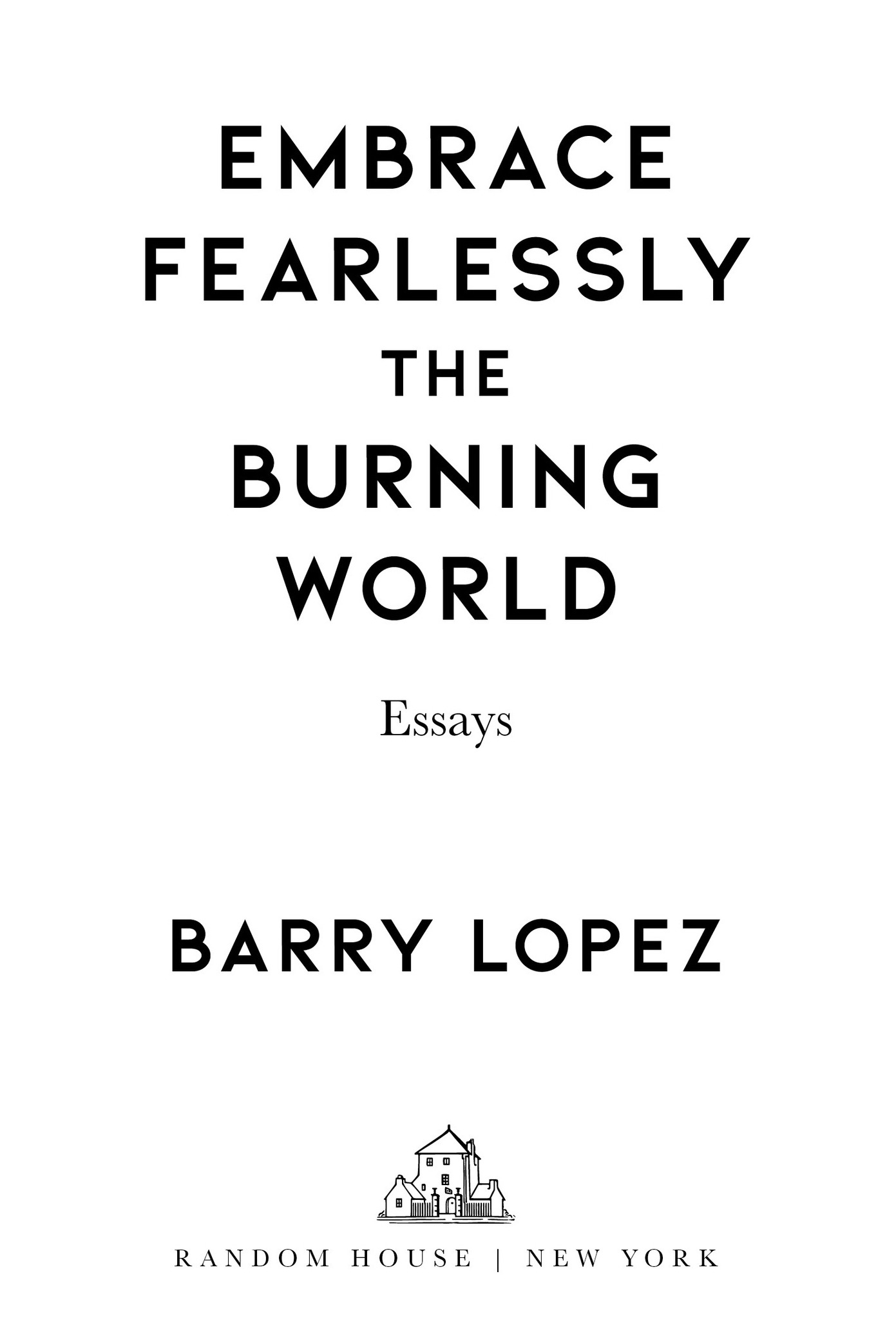
Certain essays that appear in this work have been lightly edited since their original publications. Care has been taken not to alter the authors original meaning.
Copyright 2022 by The Estate of Barry Lopez
Introduction copyright 2022 by Rebecca Solnit
All rights reserved.
Published in the United States by Random House, an imprint and division of Penguin Random House LLC, New York.
Random House and the House colophon are registered trademarks of Penguin Random House LLC.
Many of the essays in this work have been previously published. A publication history can be found on .
Library of Congress Cataloging-in-Publication Data
Names: Lopez, Barry Holstun, 19452020, author. | Solnit, Rebecca, writer of introduction.
Title: Embrace fearlessly the burning world: essays / Barry Lopez; introduction by Rebecca Solnit.
Description: First edition. | New York: Random House, 2022.
Identifiers: LCCN 2021046217 (print) | LCCN 2021046218 (ebook) | ISBN 9780593242827 (hardcover) | ISBN 9780593242834 (ebook)
Subjects: LCSH: Lopez, Barry Holstun, 19452020Travel. | American essays. | LCGFT: Essays.
Classification: LCC PS3562.O67 E43 2022 (print) | LCC PS3562.O67 (ebook) | DDC 814/.54 [B]dc23/eng/20220208
LC record available at https://lccn.loc.gov/2021046217
LC ebook record available at https://lccn.loc.gov/2021046218
Ebook ISBN9780593242834
randomhousebooks.com
Book design by Susan Turner, adapted for ebook
Cover design: Lucas Heinrich
Cover photograph: Getty/Rn An/EyeEm
ep_prh_6.0_140110426_c0_r0
That, friends, is the sum of my wanting.
Next to nothing, close to everything.
Pablo Neruda , I Ask for Silence
Attention is the rarest and purest form of generosity. Absolutely unmixed attention is prayer.
Simone Weil
The word essay comes from the French essayer, to try, and though Barry Lopez wrote book-length nonfiction and short stories, he was in some sense always an essayist, moving toward an apprehension of the natural world and our relation to it. To try is to explore the outer boundaries of ones own capacity as well as the world beyond oneself, and the meeting of these two things drives much of his work. Every essay is a document of the writers endeavor and an invitation to the reader to pursue their own explorations.
This collection of his essays has, as well, scattered through it fragments of an autobiography, and in that autobiography are traces of a quest, another form of essaying. Though Barry chose in his writing to look outward more than inward, the two directions are never truly separate in his work. We learn from both what resembles and what differs from ourselves; we learn about being human from the nonhuman, though we may choose to learn about the nonhuman for its own sake and for the joy of enlarging our understanding and deepening our relationship to the world. Other essays are both windows that take you out of yourself and mirrors that show you back to yourself, and so a flight is also a return.
The autobiographical passages in this volume are themselves a guide to the work and its aspirations. From them you can glean a practical sense of who Barry Lopez was and why he was so passionate about place, travel, and the nonhuman world. Embrace Fearlessly the Burning World contains two accounts of his long childhood ordeal of sexual abuse by a family friend, A Scary Abundance of Water and Sliver of Sky. In the first, he makes it clear that the natural world itselfwhat he could ride to on his bike, the flight of his tumbler pigeons and their daily return, the light and space and water of the San Fernando Valley, north of Los Angeles, where he then livedwas his sanctuary and his support when he otherwise so desperately lacked both.
The first essay, which came out in 2002, had a huge impact on me. The sheer generosity of recognizing how unexceptional his ordeal was, of weaving it into a broader recognition of the suffering of others and of what is redemptive and beautiful in the world around us, suggested to me more than any book-length memoir what memoir could be, and how the intensely personal and the larger world could be spoken of together in the same breath.
The act of widening ones focus is itself an act of generosity in situations like this, not as a way of ignoring ones own life but as a means for connecting it with others lives. If disconnection is the devastation that allows an abuser to abuse, a family to deny, a child to suffer in silence, connection is itself curative. We might need to go deep, the piece seems to say, but we might also need to go broad, and it does that as well. Even in the titles of the two essays about this abusereferencing water and skyBarry reaches beyond, not to avoid, but to reach out the way a drowning person might reach for flotsam in the waves.
In the earlier essay, rushing into the untrammeled space of the San Fernando Valley, when much of it was still undeveloped or agricultural, was running from something. It was also moving toward something, and journeying to that something would be what Barry would do for the rest of his lifeto what he loved most steadily throughout two dozen books and more than half a century of writing.
The love of place can sustain a life, and we usually talk as though its an unreciprocated love, a one-way street. These essays show why that is wrong. The places love us back in how they steady and sustain us, teach us, shelter us, guide us, feed us, and that old image of the Earth itself as a mother is a reminder that we depend upon the unearned bounty of the biosphere. So, in a sense, in learning to love the Earth and particular places in it, we are learning to love back what loved us all along. Learning to love these places, by studying and understanding them, was one of Barrys lifelong tasks.
Those of us who write about the natural world cherish some sense of being fed and cared for and protected by places and the living things in them, of a communion with the nonhuman world that matters on corporeal, ethical, emotional, imaginative, and spiritual terms. Which is why we have often tried to talk about both how these realms are being objectively threatenedby climate catastrophe, extinction, exploitationand disappearing from our consciousness, as human beings become more indoor, urban creatures, and what kind of loss the latter is.
We have tried to provide readers with a sense of what it means to be connected this way, both to give them a chance to access this connection through our own recounted experiences and to encourage them to seek out their own experiences or to examine them in new ways. And in hopes that by encouraging attention to and finding value in the natural world, we might move people to recognize the many ways in which it is immeasurably important not only to our survival but also to our spirits and imaginations, to justice and hope. What gets called nature writing is sometimes about animals or encounters, but often as well about the land itself, about place itself, ultimately about the Earth itself.
Theres a passage in E. M. Forsters 1910 novel named after the country house at the heart of it, Howards End. That old house in the country gives the main characters refuge and a space in which to be themselves and to be connected to rural life and community. Forster wrote:
Font size:
Interval:
Bookmark:
Similar books «Embrace Fearlessly the Burning World: Essays»
Look at similar books to Embrace Fearlessly the Burning World: Essays. We have selected literature similar in name and meaning in the hope of providing readers with more options to find new, interesting, not yet read works.
Discussion, reviews of the book Embrace Fearlessly the Burning World: Essays and just readers' own opinions. Leave your comments, write what you think about the work, its meaning or the main characters. Specify what exactly you liked and what you didn't like, and why you think so.

